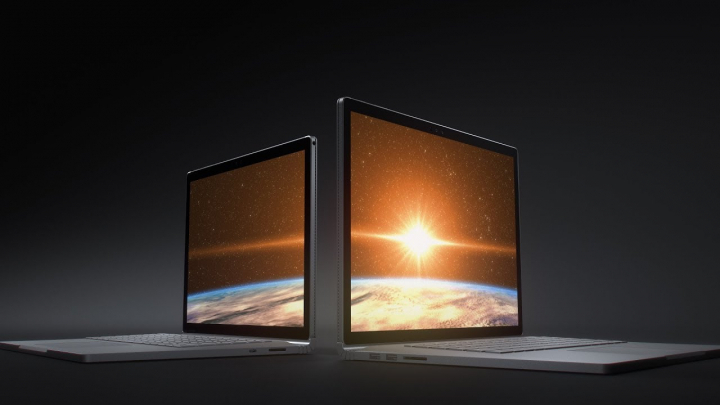Finance & Tech: Disruption or Evolution? The integration of technology into the financial sector, often dubbed FinTech, has sparked intense debate about its fundamental nature. Is technology acting as a disruptive force, tearing down established financial structures and creating entirely new paradigms? Or is it primarily an evolutionary catalyst, enhancing existing systems and processes to achieve greater efficiency and accessibility? The reality, as is often the case with complex transformations, is nuanced. The interplay of finance and technology is simultaneously disruptive and evolutionary, creating a dynamic landscape where both established institutions and nascent startups are navigating uncharted territory.

To understand the evolutionary aspects, one must acknowledge the long history of technology incrementally improving financial operations. From the advent of computers automating back-office processes in banks to the proliferation of ATMs and online banking, technology has consistently been employed to streamline and enhance traditional financial services. The internet era further accelerated this evolution. Online brokerage platforms democratized access to investment markets, while digital payment systems like credit cards and online transfer services offered greater convenience and speed compared to cash and checks. Algorithmic trading, another evolutionary step, utilized sophisticated algorithms to execute trades at speeds and volumes impossible for human traders, improving market efficiency and liquidity. These advancements, while technologically significant, largely operated within the existing financial framework. They enhanced existing services, made them more accessible, and improved operational efficiency, but they did not fundamentally challenge the core structures or power dynamics of the traditional financial system. In this sense, technology has acted as a powerful evolutionary tool, allowing established financial institutions to adapt and thrive in a rapidly changing world.
However, the rise of FinTech in the past decade has introduced a decidedly disruptive element. FinTech startups, unburdened by legacy systems and regulatory inertia, are leveraging technology to challenge established financial institutions in fundamental ways. Peer-to-peer lending platforms, for example, directly connect borrowers and lenders, bypassing traditional banks and potentially offering more competitive rates. Mobile payment solutions are rapidly gaining traction in both developed and developing economies, particularly in regions where traditional banking infrastructure is less prevalent. Cryptocurrencies and decentralized finance (DeFi) represent perhaps the most radical disruptive force, aiming to decentralize financial systems entirely, removing intermediaries and challenging the very concept of centralized control over money and financial transactions. These innovations are not merely incremental improvements; they are attempts to create entirely new financial ecosystems, often operating outside or at the fringes of traditional regulatory frameworks. The speed and agility of FinTech innovation, coupled with the potential for lower costs and greater accessibility, pose a significant disruptive threat to established financial players.
Related articles 01:
1. https://goldnews24h.com/innovation-in-finance-tech
2. https://goldnews24h.com/what-does-the-latest-tech-news-mean-for-your-investments
3. https://goldnews24h.com/convergence-where-finance-meets-tech
The disruptive potential of technology extends beyond specific financial products and services to encompass the very infrastructure of finance. Blockchain technology, the foundation of many cryptocurrencies, offers the promise of decentralized, transparent, and immutable ledgers. This technology has the potential to revolutionize various aspects of finance, from payment systems and securities settlement to supply chain finance and identity management. Similarly, Artificial Intelligence (AI) and Machine Learning (ML) are being deployed across the financial sector for tasks ranging from fraud detection and risk management to customer service and personalized financial advice. These technologies are not just automating existing processes; they are enabling entirely new ways of operating, analyzing data, and making decisions within the financial realm. The transformative power of these technologies is such that they could fundamentally alter the competitive landscape, creating opportunities for new entrants and potentially displacing established players who fail to adapt.

Yet, the narrative of pure disruption is incomplete. While FinTech startups initially positioned themselves as challengers to traditional finance, a more nuanced picture is emerging. Many established financial institutions are recognizing the potential of FinTech and are actively engaging with it, either through partnerships, acquisitions, or internal innovation initiatives. Banks are investing heavily in digital transformation, adopting cloud computing, AI, and blockchain technologies to modernize their operations and enhance their customer offerings. Traditional asset managers are incorporating robo-advisory platforms and algorithmic trading strategies into their services. Insurance companies are leveraging data analytics and AI to personalize policies and improve risk assessment. This convergence suggests that the future of finance is not necessarily a zero-sum game of disruption versus evolution, but rather a hybrid model where traditional institutions and FinTech innovators coexist and collaborate.
This hybrid model is characterized by both competition and cooperation. FinTech startups continue to push the boundaries of innovation, forcing traditional institutions to adapt and innovate. At the same time, established financial players offer scale, regulatory expertise, and customer trust that many FinTech startups lack. Partnerships and collaborations between these two worlds are becoming increasingly common, leveraging the agility and innovation of FinTech with the resources and established infrastructure of traditional finance. This symbiotic relationship suggests that the future of finance may be less about outright disruption and more about a dynamic evolution where technology acts as a catalyst for continuous improvement and adaptation across the entire financial ecosystem.
However, this evolution, even when collaborative, is not without its challenges and risks. Cybersecurity remains a paramount concern as financial systems become increasingly digitized and interconnected. The potential for large-scale cyberattacks and data breaches necessitates robust security measures and constant vigilance. Regulatory frameworks are also struggling to keep pace with the rapid pace of technological innovation in finance. Balancing innovation with consumer protection, financial stability, and anti-money laundering efforts requires careful consideration and adaptive regulatory approaches. Furthermore, the increasing reliance on algorithms and AI raises concerns about algorithmic bias, transparency, and accountability. Ensuring fairness, ethical use of data, and human oversight in automated financial systems are critical challenges that need to be addressed.
Related articles 02:
1. https://goldnews24h.com/tech-powered-finance-reshaping-the-world
2. https://goldnews24h.com/decoding-fintech
3. https://goldnews24h.com/data-driven-investing-the-new-normal
4. https://goldnews24h.com/the-intersection-of-news-finance-and-technology
5. https://goldnews24h.com/5-ways-ai-is-transforming-the-investment-industry
Despite these challenges, the integration of technology into finance also presents immense opportunities. FinTech has the potential to significantly enhance financial inclusion, bringing financial services to underserved populations and remote areas. Mobile banking and digital payment solutions can bypass the need for traditional brick-and-mortar branches, making financial services more accessible to those previously excluded. Technology can also drive down the cost of financial services, making them more affordable and accessible to a wider range of individuals and businesses. Furthermore, FinTech innovation can spur economic growth by fostering entrepreneurship, creating new jobs, and improving the efficiency of capital allocation.

In conclusion, the intersection of finance and technology is neither purely disruptive nor purely evolutionary. It is a complex and dynamic process that embodies elements of both. Technology is undoubtedly disrupting traditional financial models, challenging established institutions, and creating new paradigms. However, it is also driving an evolution, enhancing existing systems, improving efficiency, and expanding access to financial services. The future of finance is likely to be characterized by a hybrid model, where traditional institutions and FinTech innovators coexist, compete, and collaborate, constantly adapting to the rapid pace of technological change. Navigating this evolving landscape requires a balanced approach, embracing innovation while carefully managing the risks and ensuring that technology serves to create a more inclusive, efficient, and stable financial system for all.












